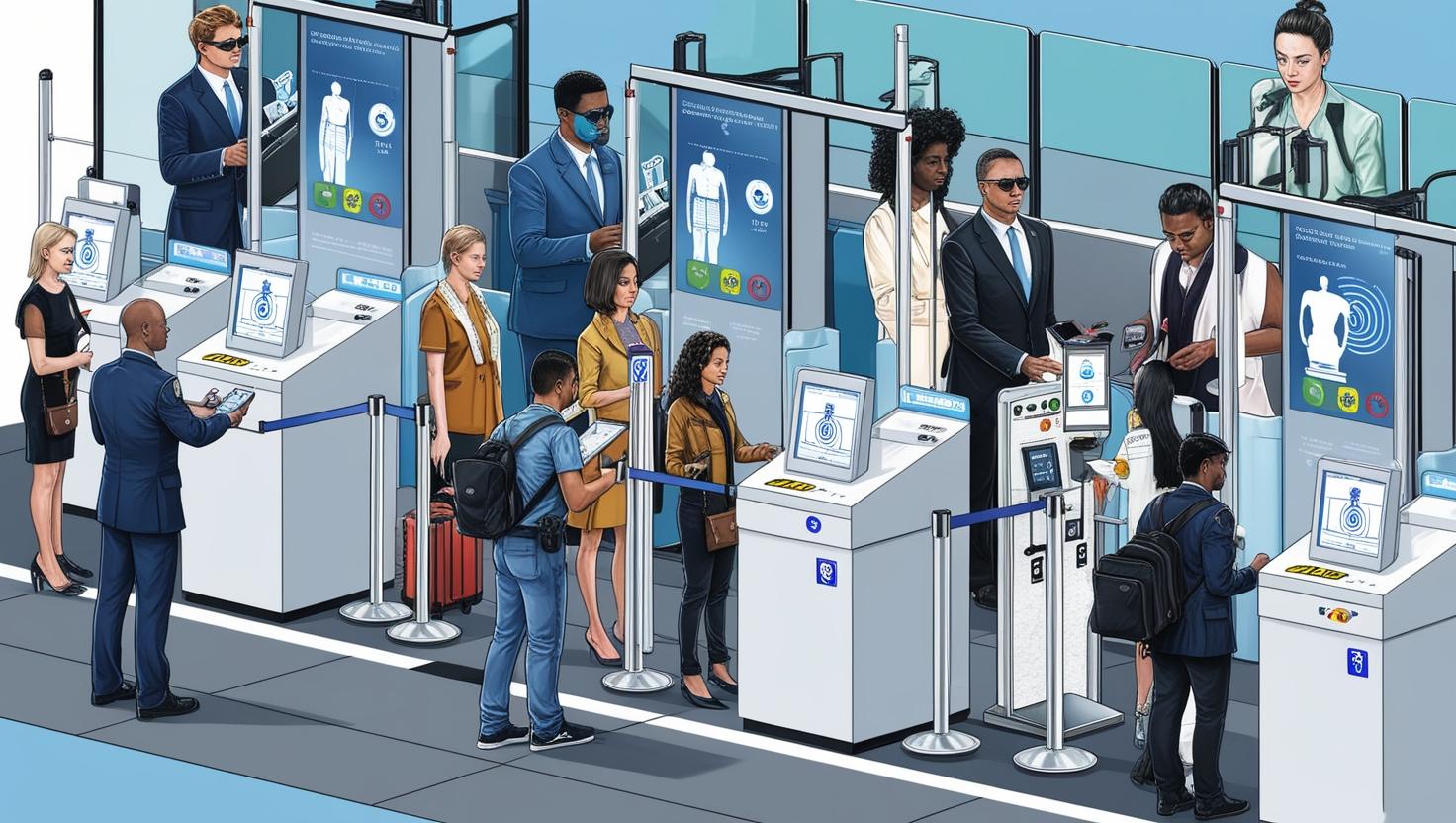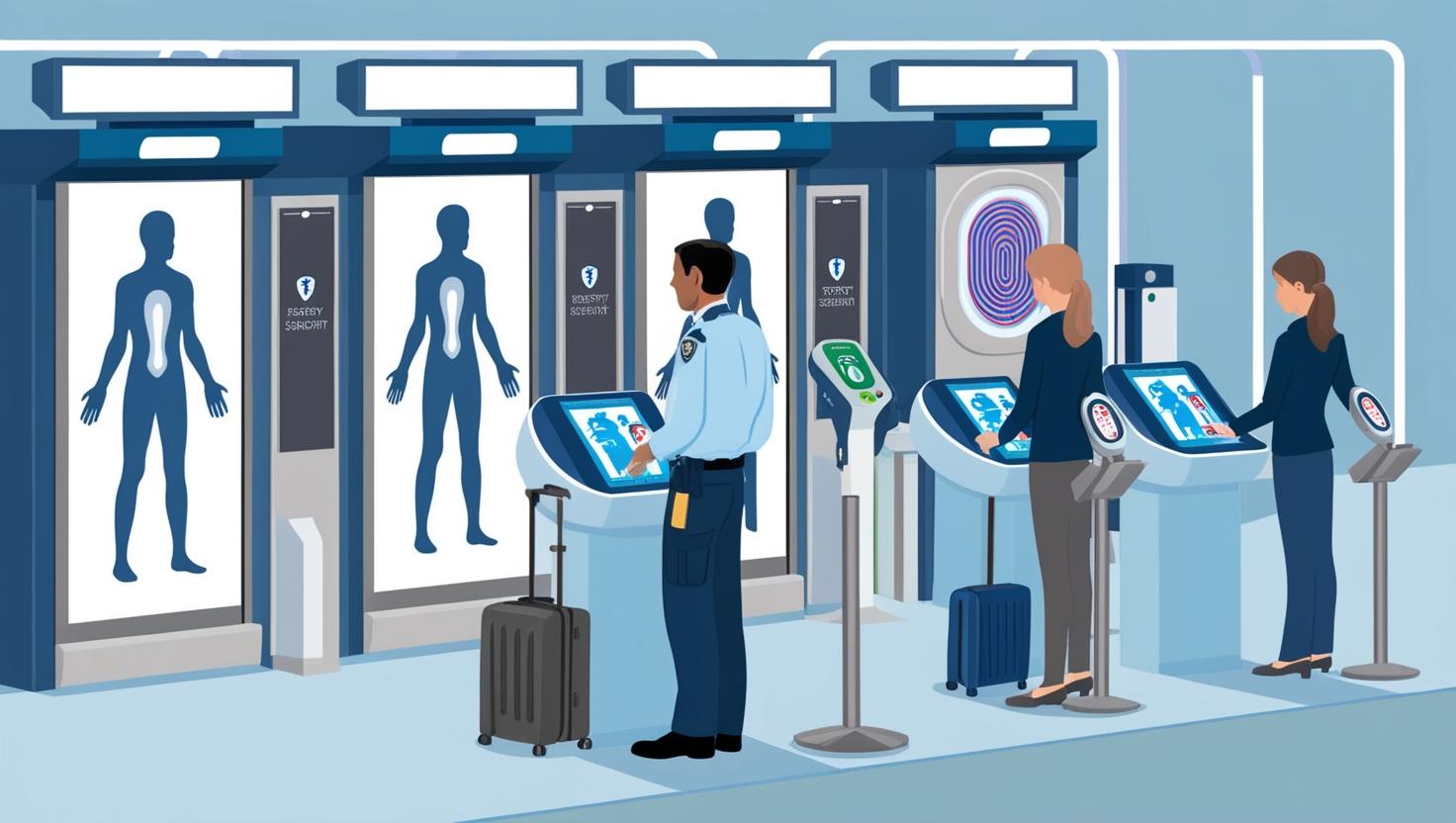The U.S. security screening market is undergoing a dramatic transformation, driven by increased investments in smart surveillance and advanced detection technologies. As the threat landscape evolves and the demand for enhanced public safety grows, security screening systems across airports, government buildings, transit hubs, and other critical infrastructure are becoming more sophisticated. This surge in innovation and spending is not only strengthening security but also enhancing the efficiency and effectiveness of detection methods.
From AI-driven surveillance to biometric identification and real-time data analytics, the integration of smart technologies is revolutionizing the security industry, offering a more proactive, precise, and scalable approach to threat detection. The U.S. security screening market, valued at billions of dollars, is set to experience exponential growth over the next decade, and this article explores the key drivers behind this growth.
The Growing Need for Advanced Security Screening
As global security threats become increasingly complex and widespread, the U.S. government, private sector, and consumers are placing a greater emphasis on enhancing security measures across various sectors. Recent events, such as the rise of terrorist attacks, cybersecurity breaches, pandemics, and civil unrest, have further highlighted the need for robust security systems capable of preventing and mitigating a wide range of risks.
Traditionally, security screening has been based on more manual, time-consuming methods such as metal detectors, X-ray machines, and physical searches. While these methods are effective, they are increasingly unable to meet the demands of modern threats, which are becoming more sophisticated and harder to detect. As a result, the U.S. security screening market is shifting toward smart technologies that offer automated, scalable, and real-time detection capabilities.

Key Technologies Driving the U.S. Security Screening Market
1. Artificial Intelligence (AI) and Machine Learning
Artificial Intelligence (AI) and Machine Learning (ML) are at the heart of the transformation in security screening. These technologies allow systems to quickly analyze vast amounts of data from surveillance cameras, sensors, and other security devices to identify potential threats in real time. AI-powered surveillance systems can detect unusual behavior patterns, identify faces, recognize suspicious objects, and predict potential security risks based on historical data.
For example, AI-driven cameras equipped with facial recognition can match individuals in a crowd with a database of known criminals or persons of interest. Machine learning algorithms can then be used to refine these systems over time, ensuring they become more accurate as they process more data. This reduces the need for human intervention and allows security teams to focus on critical areas that require attention.
2. Biometric Screening
The integration of biometric technologies—including fingerprint scanning, iris recognition, and facial recognition—is rapidly gaining traction in the security screening industry. Biometric identification offers a fast and highly accurate method for confirming identities, especially in high-security environments such as airports, government buildings, and banking institutions.
For instance, many U.S. airports are already implementing biometric facial recognition systems that allow passengers to pass through security and boarding without needing to show physical identification. These systems compare passengers’ facial features to those stored in a secure database, allowing for quick and efficient identification. By eliminating the need for traditional boarding passes and IDs, biometric systems are speeding up security checks, reducing queues, and enhancing overall passenger experience.
Download PDF Brochure @
https://www.marketsandmarkets.com/pdfdownloadNew.asp?id=264685413
3. Smart Surveillance Cameras
Advancements in smart surveillance cameras are another major factor driving the growth of the U.S. security screening market. These cameras are equipped with high-definition capabilities, motion detection, and real-time analytics, allowing for continuous monitoring and quick detection of potential threats. Many modern cameras also include features like night vision and thermal imaging, which are useful for tracking and identifying intruders in low-light conditions or during extreme weather events.
The use of cloud-based surveillance enables real-time monitoring from any location, which is essential for large-scale operations such as national borders, airports, or urban centers. This scalability allows businesses and governments to increase their security measures without needing to overhaul entire infrastructure. Additionally, cloud solutions offer the ability to store vast amounts of footage securely and access it remotely, making it easier to review and analyze incidents after the fact.
4. Explosive and Narcotics Detection Systems
The need for advanced detection technologies in environments such as airports and high-security venues is being met with advanced screening systems that use chemicals sensors, X-ray imaging, and mass spectrometry to detect explosives, drugs, and other illegal substances. These systems are able to scan luggage and cargo in real-time, flagging suspicious materials with a high degree of accuracy.
Investments in advanced scanning technologies are also being deployed to improve security at critical infrastructure sites, such as power plants, government buildings, and transportation networks. These systems are capable of detecting threats that are otherwise undetectable by traditional methods.
5. Automated Screening and Robot-Assisted Security
Robotic technology is increasingly being incorporated into the U.S. security screening landscape, with robots and autonomous systems designed to assist human operators in security operations. Robots equipped with AI and advanced sensors are now being used in areas like airports, shopping malls, and corporate offices to perform routine security checks and scans. These robots can perform tasks such as patrolling, detecting intrusions, and even screening packages in real time.
The use of autonomous robots not only helps improve efficiency but also reduces the risk of human error and allows security personnel to focus on higher-level decision-making.
Growing Investment in Smart Security Solutions
The increase in security threats and the need for more sophisticated detection systems have driven a surge in investments in security screening technologies.
Government agencies at both federal and state levels are ramping up their investments in high-tech security infrastructure, recognizing the need for cutting-edge systems to protect against evolving threats. Likewise, the private sector, particularly in retail, banking, and transportation, is heavily investing in the latest security screening systems to safeguard assets and ensure public safety.
The U.S. Department of Homeland Security (DHS) and the Transportation Security Administration (TSA) have been key players in advancing security screening technologies in airports and transit hubs, with billions allocated for research and development of advanced detection systems, including 3D X-ray scanners and advanced body scanners.

The Role of Data and Analytics in Security Screening
One of the critical elements of modern security screening is the ability to analyze data quickly and efficiently. The integration of real-time data analytics enables security teams to respond proactively to potential threats. By utilizing Big Data, AI, and cloud platforms, security screening systems can continuously improve threat detection while also providing actionable insights for operational optimization.
For example, predictive analytics can anticipate patterns of behavior that may indicate a threat, providing security personnel with advanced warnings and actionable intelligence. Additionally, data-driven insights can help security teams optimize staffing levels, improve the accuracy of screenings, and reduce the number of false alarms.
The Future of U.S. Security Screening
The U.S. security screening market is entering an exciting new era, driven by increased investments in smart technologies, AI, and data analytics. As security threats continue to evolve, so too will the systems designed to detect and neutralize them. The future of security screening will likely feature even more automation, AI integration, and data-driven solutions that streamline operations, reduce human error, and improve public safety.
By continuing to invest in the latest security technologies, the U.S. will remain at the forefront of protecting its citizens and infrastructure from emerging threats while creating a more efficient and user-friendly security experience across all sectors.
The U.S. security screening industry is expanding rapidly, driven by growing investments in smart surveillance, AI-powered detection, and biometric technologies. These advanced solutions are transforming the landscape of security screening, offering more accurate, efficient, and automated methods for detecting threats. As the market grows and technologies continue to evolve, the U.S. is positioning itself to tackle future security challenges with agility and intelligence, making public spaces and critical infrastructure safer for everyone
